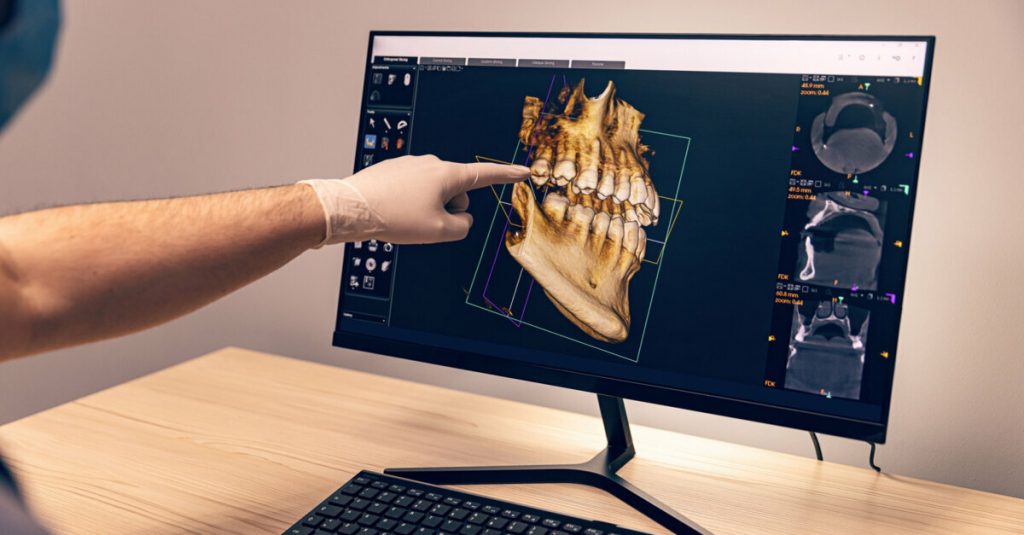
Machine learning and other AI have found significant applications in dental diagnostic imaging since the early twenty-first century. Digital radiography and CBCT have reshaped dentistry, leading to the development of computer-aided detection and diagnosis systems. These advancements have enabled dentists to identify various conditions, including maxillary sinus lesions, osteoporosis-related mandibular bone changes and carotid artery calcifications, with remarkable precision.
Early detection and diagnosis systems relied on human-crafted rules and knowledge to make specific X-ray findings. However, since the early 2010s, machine learning, particularly deep learning (DL), has gained prominence in detection and diagnosis systems. DL leverages neural networks inspired by the human brain’s structure, enabling it to excel in image analysis, natural language processing, predictive analytics and machine system control. In dental diagnostic imaging, AI applications have steadily advanced across various modalities, such as intra-oral radiography, panoramic radiography and CBCT.
The classification task plays a pivotal role in identifying tooth locations on periapical radiographs, where distinguishing between maxilla and mandible and left and right sides can be challenging. DL offers a precise solution for tooth identification. Importantly, user-friendly graphical interfaces have made DL accessible to dentists without programming expertise.
The accuracy of the initial classification labels assigned by humans is crucial for supervised classification tasks, where a machine learning model is trained to classify data into predefined categories. For instance, DL can accurately identify impacted supernumerary teeth based on clear criteria. Conversely, diagnosing mandibular cortex morphology indicating osteoporosis may require expert observation. Identifying periapical lesions, like radicular cysts, presents further challenges.
Region detection tasks in DL involve AI learning from expert-annotated regions of interest to automatically define rectangular regions of interest in images. This is essential for classifying positive and negative radiographic findings. Dental applications include detecting maxillary sinus issues and radiolucent lesions in the mandible.
Automatic tooth detection in panoramic radiography is a significant breakthrough. This technique not only aids in diagnosing dental diseases but also assists in postmortem identification after natural disasters. However, overlapping teeth in panoramic images can complicate the identification process.
The segmentation task in DL divides an image into distinct segments, distinguishing objects from the background. Semantic segmentation uses colours to separate objects, and instance segmentation identifies individual instances of the same class. This technique is suitable for tooth identification in panoramic radiographs with a clear view. Segmentation tasks complement region detection and are essential for accurately tracing the outline of target structures and lesions. Examples include mandibular canal and maxillary sinus extraction in panoramic radiographs and segmentation of periapical lesions.
Generative AI encompasses creating new content, such as text and images, through DL models. These models have been used to reduce image noise and refine dental images, improving interpretation and diagnosis. Additionally, generative AI aids in creating patient-specific dental and facial features, assisting in treatment explanations and CAD.
The study, titled “Deep learning and artificial intelligence in dental diagnostic imaging”, was published in the December 2023 issue of the Japanese Dental Science Review.
Credit: https://www.dental-tribune.com/news/japanese-professor-makes-learning-about-ai-in-dentistry-easy-with-published-overview/
